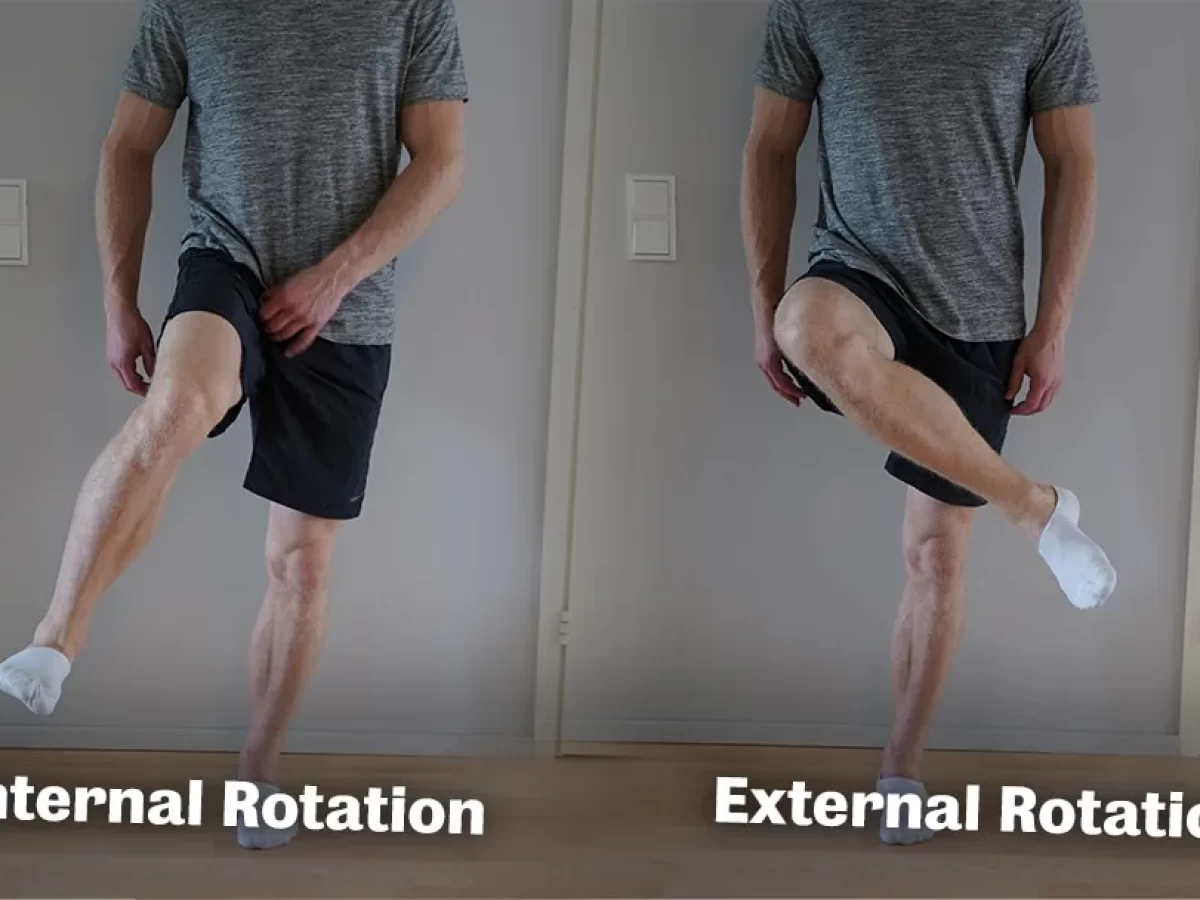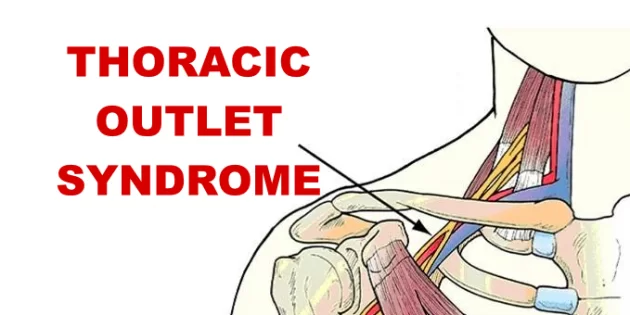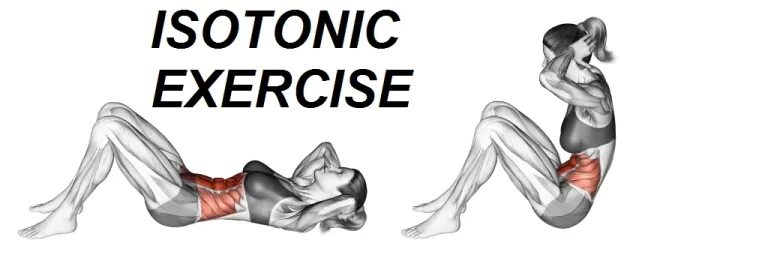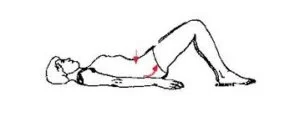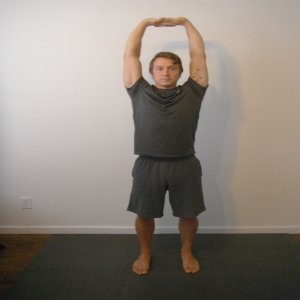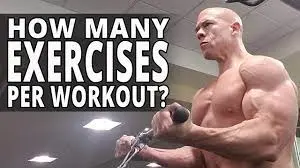Hip Internal Rotation
Introduction
Hip internal rotation is a crucial movement that occurs at the hip joint, allowing the femur (thigh bone) to rotate inward towards the midline of the body. This motion is essential for various activities, including walking, running, and various athletic movements.
Proper hip internal rotation is vital for maintaining overall lower body mobility and stability. When the hip internal rotation is limited or impaired, it can lead to compensatory movements or increased stress on other joints, potentially resulting in discomfort or injury.
Understanding the importance of hip internal rotation and incorporating appropriate exercises and stretches can help improve overall hip mobility and function, contributing to better performance and reduced risk of injury in various physical activities.
Hip internal rotation is a hip joint action in which the femur (femur) turns inward or medially towards the body’s midline. Along with hip flexion, extension, abduction, and adduction, it is one of the basic hip movements.
Consider yourself standing with your feet pointed forward to better grasp internal hip rotation. Whenever the femur rotates inward, the hip joint moves, and the knee and leg likewise rotate inward. External rotation of the hip refers to the opposite action in which the femur rotates outward or laterally away from the midline.
So, what are you holding out for? Take the plunge and explore the benefits of this popular trend. Who knows, maybe you’ll surprise yourself! simple but successful maneuver? It’s that simple: stand up and twist your leg inward till your foot twists and your toes point inward.
What Precisely Is Hip Internal Rotation?
The movement of the thigh bone inward, towards the midline of the body, is referred to as the internal rotation of the hip. The femur bone rotates within the hip socket during this action. During sports activities, it is a crucial component of many functional crossing of the legs, squatting, and twisting actions. Internal hip rotation is also required. for proper lower limb posture and joint mechanics during walking.
Internal hip rotation is connected with a variety of activities and movements, including walking, jogging, squatting, and cross-legged sitting. It is also used in a variety of sports and exercises, including golf, baseball, and martial arts.
Hip internal rotation varies from person to person due to factors such as anatomy, flexibility, and muscle imbalances. If you are concerned about your hip mobility or suspect a problem, see a doctor or experienced physiotherapist who can perform a comprehensive assessment and provide appropriate guidance.
Hip Internal Rotatores Muscles
Internal rotators of the hip are a collection of hip muscles that work together to rotate the femur (femur) inward, towards the body’s midline. These muscles are involved in a variety of actions, including walking, running, and maintaining balance.
The following are some of the most important hip internal rotator muscles:
- Located on the lateral side of the hip, this muscle functions as an abductor and internal rotator of the hip.
- It is in charge of keeping the pelvis stable while walking and other weight-bearing activities.
Gluteus minimus:
- This muscle is located beneath the gluteus medius and aids with hip abduction and internal rotation.
- Additionally, it aids in hip joint stabilization.
- Located on the lateral side of the hip, this muscle aids in hip flexion, abduction, and rotation.
- It works with the gluteus minimus and medius.
Piriformis:
- Deep within the buttock is the piriformis muscle.
- It originates in the sacrum and links the head of the femur.
- It is the primary muscle responsible for hip rotation, including internal rotation.
Obturator internus and externus:
- These muscles are placed on the inside of the pelvis and aid in femur rotation.
- The obturator internal is deeper and comes from the inside of the pelvis, whereas the superficial comes from the outside.
Gemellus superior and inferior:
- They are tiny and placed deep in the hip area.
- They collaborate with the obturator muscles to aid with hip internal rotation.
- This muscle is placed on the back of the hip joint and is responsible for hip adduction and internal rotation.
Range Of Motion Of Hip Internal Rotation
Internal hip rotation range of motion varies from person to person and is influenced by anatomical structure, flexibility, and any underlying disorders. However, I can give you an overview of the hip’s range of motion.
Hip internal rotation range of motion is typically between 30 and 45 degrees. This indicates that a person should be able to rotate their femur (femur) inward towards the midline of their body, roughly the neutral or starting position, on average. It should be noted that this range varies from person to person.
from 30 to 45 degrees.
It is worth noting that tension or constraints in the muscles, tendons, ligaments, or related tissues surrounding the hip of motion of internal rotation. Certain diseases or traumas, such as hip arthritis, labral tears, or a sprained ankle, can cause Muscle imbalances and can also have an impact on range of motion.
You could perform the following approach to examine the diversity of hip internal rotation movements:
Preparation:
- Locate a comfortable, level floor for the person being evaluated to lie down on, as well as a treatment desk or workout mat.
- Make that there is enough space for the hip to move freely.
Positioning:
- Have the guy or woman lie on their back with their legs straight out.
Identification of landmarks:
- Find the landmarks or bony protrusions on the person’s body.
- Consider the trochanter, which is a bony protrusion on the side of the upper thigh at the hip joint.
Starting position:
- With the man or woman in a mendacity position, flex their knee to a 90-degree angle, bringing their foot flat on the floor.
- This function stabilizes the pelvis and reduces compensatory movements.
Measurement:
- Place one hand on the man’s or woman’s knee to stabilize it while the other hand holds the ankle.
- Gently twist the hip inward, aiming to bring the man’s or woman’s knee closer to the floor.
- Concurrently, examine the range of motion and be mindful of any limits, discomfort, or pain.
Recording:
- To quantify the hip inner rotation, use a goniometer, a specialized device for measuring joint angles.
- Align the goniometer’s desk-bound arm with the man or woman’s trunk, then the moveable arm with the thigh, keeping in mind the height at which the thigh bone is circled inward.
Internal Hip Rotation Test:
The Thomas test is a popular method for measuring hip internal rotation. This can be accomplished as follows.
- Lie down on a hard surface, like a treatment table or an exercise mat.
- Bring one leg up to your chest, bending it.
- Stabilize the knee by holding it close to the chest with both hands.
- Allow the other leg to hang straight over the edge of the surface.
- The back and neck should be relaxed against the surface.
- Slowly drop the bent leg to the surface, allowing the straight leg to fall.
- Pay close attention to any sensations or limits you notice in the straight leg’s hip.
- Keep an eye on your movements and any discomfort or limitations you may be experiencing.
- Repeat the test on the opposite side.
Inevitably limited internal rotation on one or both sides of the hip during the Thomas test, could indicate tightness or strain in the internal rotator muscles. It is crucial to remember, however, that this test is only a general indication that a comprehensive evaluation by a physician or experienced physical therapist is required.
Hip Internal Rotation: Manual Muscle Testing
Muscles Involved:
- Gluteus Minimus (anterior fibres)
- Gluteus Medius (anterior fibres)
- Tensor Fasciae Lata
Positioning the Patient:
- Grades 3 to 5 – The patient is sitting on a plinth with the test-side knee flexed to 90°, ideally with the foot suspended off the floor, i.e. seated on a tall plinth’s top.
- Grades 0-2 – The patient is supine (‘gravity minimal’).
Position of Therapist:
- Kneel beside the patient in a sitting position and medially stabilize the distal thigh.
- If the patient is supine, the therapist should stand on the test side.
To put to the test:
- The patient actively rotates the hip internally.
- For grades 4–5, apply resistance through the lateral ankle range in the opposite direction of internal rotation.
- To meet grade 5 ‘normal muscle’ performance criteria, the patient must be able to move through the whole range of motion (active resistance testing) or sustain an endpoint range against maximum resistance (break testing).
What Is the Importance of Hip Internal Rotation?
- Internal rotation aids in the prevention of back pain. If you have limited internal hip range of motion, you will compensate in your lumbar spine. It also helps you gain stability and enhances your balance.
- Master your hip internal rotation now and take control of the floor. That is why it is critical to maintain adequate hip mobility so that you can move freely and remain active without experiencing chronic aches and pains.
- Strong hip internal rotators imply more strong and stable joints for better performance and less risk of injury – sounds amazing, doesn’t it? Make a regular investment in hip internal rotation; it is critical to sustaining pain-free movement.
Improve your hip internal rotation by doing the following:
To improve hip internal rotation, we must strengthen and/or stretch this movement pattern. But we must do so in a way that makes the body feel protected. If we disregard the pain signals and try to “push through,” our bodies will not make the necessary changes.
There are workouts that can help you enhance your hip internal rotation. Each exercise employs a unique strategy for increasing strength and flexibility. They are all valuable, but not all of them are perfect for YOU right now. It’s critical to choose the one that works best for YOU right now. After a few weeks or months of focusing on one activity, you can move on to the others.
How do you know which workout to prioritize? Here are some pointers,
- The workout should not be overly painful.
- A little discomfort is okay. You want to be able to manage how much discomfort you feel.
- You desire to believe that things are improving for you.
- You want to be improving your range, getting stronger, or progressing in some way with each session and workout.
- You realize what you’re attempting to accomplish.
- You are experiencing what you should be feeling. If you don’t understand why you’re doing a workout, it’s pointless.
Internal Hip Rotation Advantages:
Improving your hip strength and mobility with internal hip rotations can help you in a variety of ways, including:
- Athletic performance enhancement
- Lower-body injury prevention
- Eliminating lower back and knee pain.
- Muscle strength has grown.
- Improves daily physical performance
- Muscles surrounding your hip should be strengthened.
- Regaining hip mobility
- Muscle unwinding
- Improve your movement.
- Increase your adaptability.
Internal Hip Rotation Exercise:
Inadequate hip internal rotation might cause gait problems. For example, the soles of the feet or the knees may buckle inward. When other portions of the lower body compensate for insufficient hip internal rotation, your risk of injury increases.
Exercise can aid in the development of powerful hip internal rotators. Stretching improves flexibility and range of motion in the muscles responsible for inward hip rotation.
Seated hip internal rotation
- Begin by sitting on the ground with your knees at 90 degrees.
- Lay your feet down on the ground, spaced apart comfortably.
- Extend your left arm behind your back, palm down on the ground.
- Put the right hand against the right thigh.
- Flex your right foot so that the right toe points up. This protects your knee during hip internal rotation.
- Turn your right inner thigh towards the ground while keeping your hand on your right knee.
- As you lower your thigh, your right thigh and right calf should form a right angle.
- A stretch should be felt in the outer and frontal regions of your hip.
- For strengthening you can use a resistance band.
- Repeat the action by returning your right leg to its previous place.
- Then relax.
- Repeat this exercise 5-10 times.
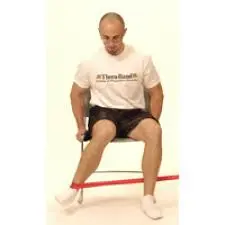
Squatting internal rotations
- Begin in a deep squat, clasping your hands in front of you.
- Push yourself slightly upward and to the left side with your left leg.
- Your right thigh should spin inward in your hip socket as your right leg lowers towards the ground.
- Return to your squat after a little pause.
- Using your right leg, push yourself up and to the right side.
- Allow your left leg to fall towards the ground this time to achieve left hip internal rotation. Pause, then repeat the movement on the right.
- Return to your neutral position after that.
- Then you may unwind.
- Repeat 5–10 times on each side.

Twisted legs hip internal rotation
- Begin by sitting on the ground, knees bent, and feet flat on the floor.
- For balance, extend your arms and place your palms behind you.
- Allow both of your knees to descend to the ground and to the right.
- Your left thigh should be straight in front of you, and your left calf should be flat against the ground.
- Put your left knee in front of your right foot.
- Your right hip should feel really stretched out.
- If you don’t immediately feel it, try bringing your torso closer to your legs or repositioning your legs.
- Hold for a couple of seconds.
- Return to your neutral position after that.
- Then you may unwind.
- 5-10 times through this exercise.
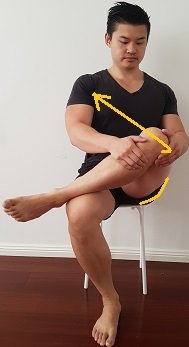
Seated leg extension
- Place your feet flat on the ground and sit in a chair.
- To protect your knee, extend your right leg straight out in front of you and flex your foot.
- Your right toe should be facing up.
- Twist your right leg completely so that your toes point to the left.
- Pause for a moment, then point your right toes upward again.
- Return to your neutral position after that.
- Then you may unwind.
- Next, carry out the exercise again with your left leg.
- 5-10 times through this exercise.
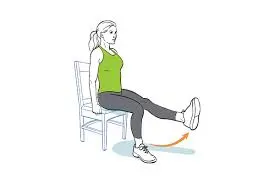
Supine Internal Rotation Stretch
- Lie down on your back on a mat or the ground with your legs extended.
- Place your right foot flat on the ground and bend your right knee.
- Cross your left ankle over your right knee to form a formation.
- Softly move your right knee closer to your chest with your fingertips until you feel a stretch in your left hip.
- Hold the stretch for 20-30 seconds while keeping your upper body relaxed.
- Cross your right ankle over your left knee and repeat on the other side.
- Return to your neutral position after that.
- Then you may unwind.
- 5-10 times through this exercise.
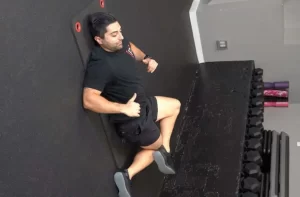
Prone Internal Rotation Exercise
- Lie face down on a mat or on the ground with your legs extended.
- Bend your right knee to 90 degrees and bring your foot closer to the ceiling.
- While keeping your hips and pelvis stable, progressively rotate your right leg inward, aiming to bring your heel closer to your opposite hip.
- Hold for a few seconds on top of the range of motion, feeling the hip muscles contract.
- Return to your neutral position after that.
- Then you may unwind.
- Switch to the opposing leg and repeat the exercise.
- 5-10 times through this exercise
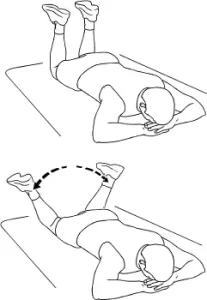
Standing Internal Rotation with Resistance Band
- Attach a resistance band at hip height to a strong anchor factor, such as a door handle or post.
- Stand sideways to the anchor factor and wrap the band around your long-way leg’s ankle.
- Position yourself far away from the anchor point to instill fear in the band.
- For stability, keep your toes hip-width apart and interact with your middle.
- In opposition to the band’s resistance, rotate your long-way leg inward, bringing your foot closer to your midline.
- Hold for a second at the top of the movement before returning to the starting function.
- Return to your neutral position after that.
- Then you may unwind.
- 5-10 times through this exercise
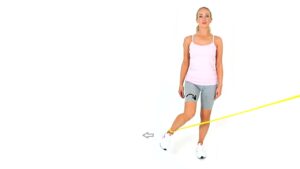
90-90 Foot Lift
- Begin by sitting on the mat with your feet flat on the ground.
- You can get a Yoga Mat, which is an all-purpose, thick, anti-slip, and extremely durable exercise mat.
- Allow both knees to descend down and to the left so that the inside of your right leg and the outside of your left leg are on the ground.
- Your legs should be 90 degrees bent at the knee.
- Then, while maintaining your hips and upper body steady, try to leave your right foot.
- Lift and then lower your right foot.
- Return to your neutral position after that.
- Then you may unwind.
- 5-10 times through this exercise.
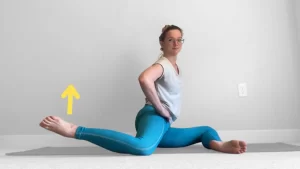
Side Lying Banded Internal Rotation
- Begin by lying on your side on a mat or comfortable surface, supporting your head with your lower arm.
- Attach a resistance band to your hips and knees and bend them to 90 degrees.
- Throughout the workout, keep your feet in contact with each other.
- Lift your upper knee slowly by rotating at the hip while keeping your feet together.
- Lift your knee while keeping your feet in contact with each other.
- Hold for a second in the top position, feeling the tightness in your hip.
- Then, while keeping control of the action, carefully return your knee to the beginning position.
- Return to your neutral position after that.
- Then you may unwind.
- Repeat the maneuver for the desired amount of time.
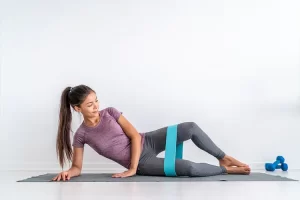
Standing Pendulum Leg Swings
- Begin by standing with your weight on your left leg and your right knee up.
- Your hip and knee should be bent 90 degrees, with your knee exactly in front of your right hip (do not let your knee sag to the floor, keep it raised!).
- Keeping your knee in the same position slowly swing your lower leg across your midline, rotating your thigh to the outside – this is your external rotation (thigh rotating away from your midline).
- Following that, swing your lower leg to the outside while turning your thigh inward – this is your internal rotation.
- Repeat for 5 reps in each direction, turning the top of your thigh to the outside, then inside. Keep your knees quiet (don’t let them wave around) and your hips level (don’t allow your hips to tilt).
- Repeat with the other legs.
- Return to your neutral position after that.
- Then you may unwind.
- 5-10 times through this exercise.
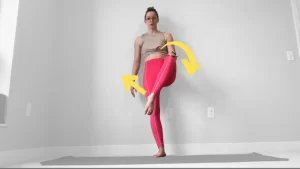
Which precautions must be taken when exercising?
- When exercising, correct posture is essential.
- Don’t do any severe activity.
- Warm up completely before starting any exercise.
- Stop exercising if you feel an extreme ache.
- Get the Right Balance
- Stay hydrated.
Conclusion:
- Finally, hip internal rotation is a frequently ignored aspect of hip mobility and overall physical wellness. Incorporating these six excellent exercises and stretches into your routine on a regular basis can result in better hip mobility, enhanced performance in various physical activities, and a lower chance of injury.
- Remember that consistency is essential, and your advancement should be moderate and within your comfort zone. If you’re confused about the exact form or have pre-existing conditions, get expert help. Finally, your quest for improved hip mobility demonstrates your dedication to health and fitness. Continue to move, be flexible, and appreciate each small win along the road!
- Walking, running, squatting, crouching, and crawling all need the activation of your hip’s internal rotators. They are also used when you stand on one foot and rotate your pelvis. It would be difficult to execute daily actions such as putting on pants or getting into a bathtub without hip internal rotation.
FAQs
What can I do to alleviate hip internal rotation pain?
Combining corrective workouts, stretching, and, on occasion, rest provides you the best chance of feeling better. It is critical to highlight that before implementing any treatment plan, you should consult with your doctor or physical therapist to assess your specific needs.
What causes a lack of hip internal rotation?
Hip internal rotation can be caused by too-tight tissue, anatomical abnormalities, and even poor load control during athletics or physical activity.
What is the significance of hip internal rotation?
It is critical to promote good posture and muscular balance throughout the femur, hip, and lower extremities. Compensations in other joints or the lower back may occur as a result of decreased hip internal rotation. Chronic pain or joint problems can result.
What causes limited hip internal rotation?
Sitting for long periods of time (with poor posture) might reduce our capacity to move in full motion, causing more restrictions as our body adjusts to the lack of mobility. Specific injuries and disorders, such as osteoarthritis and avascular necrosis, limit our practical range of internal hip rotation as well.
What factors affect hip internal rotation?
People frequently try to force additional internal rotation on a system that literally cannot spin any farther due to a blockage in the back of the hip where the femur needs to travel. This is frequently due to capsular constriction, which means that the hip capsule itself is tight and needs to be released.
What muscle is in charge of hip internal rotation?
Secondary internal rotators include the anterior fiber of the gluteus minimus and gluteus medius, the tensor fasciae lata, the adductor longus, the adductor brevis, the pectineus, and the posterior head of the adductor magnus.
Which variables influence hip internal rotation?
The gluteus minimus and medius, in particular, play an important role in hip internal rotation, especially when your hip is flexed. Although the gluteus maximus is commonly considered an external rotator, the anterior (or front) fibers also aid in internal rotation.
What role does hip internal rotation play?
When you move your thigh bone inward, you are stimulating muscles such as the tensor fasciae lata, upper gluteus muscles, and inner thigh muscles. Hip internal rotation exercises and stretches can help you enhance the internal rotator range of motion and prevent lower body ailments.
What is the purpose of hip internal rotation?
Internal hip rotation is a seated exercise that can assist in improving hip strength and mobility. Stronger hip muscles make walking and running easier, as well as reducing strain on your knees and lower back.
What advantages does internal rotation provide?
Internal rotation is a shoulder workout that is frequently disregarded. It is vital, however, since it strengthens the rotator cuff, boosts shoulder joint stability, and improves range of motion. Injury reduction is a major benefit when performed on a regular basis and with proper form.
How much internal rotation is considered normal?
between the ages of 35 and 40
It is worth noting that the normal internal rotation ROM ranges between 35 and 40 degrees.
What effect does hip rotation have?
Furthermore, because hip rotation altered the position of the hamstring muscles, which had a substantial effect on muscle activity, hip rotation may be useful for selective training of the medial or lateral hamstrings.
What are the obstacles to internal rotation?
Internal joint rotation is thought to be limited by the tightness of the posterior capsule and the muscular tendon unit of the posterior rotator cuff. GIRD (glenohumeral internal rotation deficiency) is caused by posterior capsule tension.
What is the purpose of the rotation exercise?
Training rotation enables your body to perform actions with strength and power throughout the day. This assistance helps you prevent serious injury. Rotational workouts target the hips and trunk. Better functional strength in the trunk muscles will increase torso rotation.
What are the signs of insufficient internal hip rotation?
Any pain in the upper leg or buttocks could be caused by a lack of hip internal rotation, as could soreness or stiffness in the back or lower down the leg, all the way to the knee, as the muscles here compensate for weak or injured hip muscles.
What exactly is improper hip rotation?
Femoral retroversion is a rotational or torsional malformation in which the femur (thighbone) turns backward (outward) in reference to the knee.
What exercises involve hip rotation?
Clamshells & Reverse Clamshells.
Fire Hydrants with Toe Drop.
Close Knee Block Crunches.
90-90 Leg Lifts.
Squatting internal rotations.
Twisted legs hip internal rotation.
Why is there insufficient hip rotation?
Long periods of sitting can exacerbate weak hip external rotators. Other typical reasons for weak hip external rotators include hip surgery and injuries.
What is a warm-up for hip rotation?
Standing up straight is a good method to get your hip joint warmed up. Use one leg for both balance and all of your weight. You should raise your knee and turn to the side in my direction. Then we must lower that foot. All circular movements at the hip do call for some degree of balance.
Reference:
- Vandergriendt, C. 2020, June 27. Stretches & Exercises to Increase Hip Internal Rotation Mobility. Healthline. https://www.healthline.com/health/hip-internal rotation#:~:text=Hip%20internal%20rotation%20is%20the,the%20rest%20of%20your%20body.In-Text Citation: (Vandergriendt, 2020)
- BOHANNON, R. W. 1997. INTERNAL CONSISTENCY OF MANUAL MUSCLE TESTING SCORES. Perceptual and Motor Skills, 85(6): 736. In-Text Citation: (BOHANNON, 1997).
- Internal Hip Rotation. n.d. hinge health. https://www.hingehealth.com/resources/articles/internal-hip-rotation/. In-Text Citation: (“Internal Hip Rotation,” n.d.)
- EXERCISE, Nichols, J., Calver, S., & Chester, R. 2012. Can the glenohumeral internal rotation deficiency be prevented or treated with stretches? Physical Therapy Reviews, 17(5): 261–270. In-Text Citation: (Nichols, Calver, & Chester, 2012)
- Souza, R. B., & Powers, C. M. 2008. Predictors of Hip Internal Rotation during Running. The American Journal of Sports Medicine, 37(3): 579–587.In-Text Citation: (Souza & Powers, 2008)
- Image 3, Mark. 2022, January 6. Exercises to Increase Hip Internal Rotation. Posture Direct. https://www.posturedirect.com/hip-internal-rotation/. In-Text Citation: (2022)
- Image 4, Robotec. n.d. . https://www.robotec.com.uy/siden.asp?iid=239091458&cid=157. In-Text Citation: (“Robotec,” n.d.)
- Image 5, Supine Hip Internal Rotation Stretch – [P]rehab. 2021, July 28. [P]rehab. https://library.theprehabguys.com/vimeo-video/supine-hip-internal-rotation-stretch/. In-Text Citation: (“Supine Hip Internal Rotation Stretch – [P]rehab,” 2021)
- Image 6, Hip Internal Rotation (Eccentric) – Prone, Knees Flexed to 90 Degrees. n.d. . https://iris.hattiesburgclinic.com/patadv/exkit/Eccentric%20Exercises/English/0470000078hip010m_English.html. In-Text Citation: (“Hip Internal Rotation (Eccentric) – Prone, Knees Flexed to 90 Degrees,” n.d.)
- Image 7, Rehab My Patient. 2022, January 25. Hip Internal Rotation Band Standing Exercise. YouTube. https://www.youtube.com/watch?v=MoYxDnoqPJE. In-Text Citation: (2022)
- Image 8, Winkler, D. 2022, December 18. Adaptability — Dani Winks 90-90 Side Foot Lifts. Danny. Dani Winks Flexibility. https://www.daniwinksflexibility.com/flexopedia/90-90-stetch-side-foot-lifts. In-Text Citation: (Winkler, 2022)
- Image 9, Hip Internal Rotation: 6 Most Effective Exercises & Stretches to Try. n.d. DMoose. https://www.dmoose.com/blogs/training/hip-internal-rotation-6-best-exercises-stretches-mobility. Reference inside text: “Hip Internal Rotation: 6 Best Exercises & Stretches to Try,” (n.d.)
- Image 10, Winkler, D. 2022, December 17. Pendulum Leg Swings — Dani Winks Flexibility. Dani Winks Flexibility. https://www.daniwinksflexibility.com/flexopedia/pendulum-leg-swings. In-Text Citation: (Winkler, 2022)

